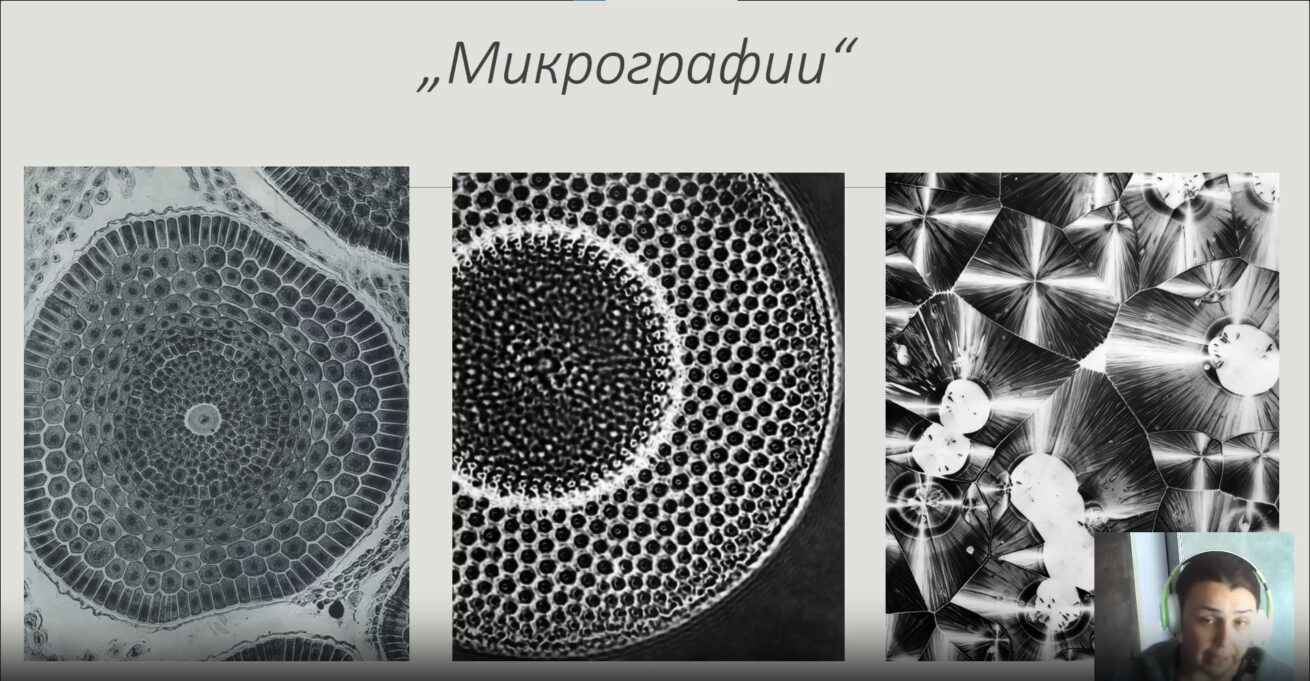Yesterday evening, on May 26, 2020 (Tuesday), at 8:30 p.m., an online lecture was conducted in the field of artistic photography. Using the Zoom application, our esteemed member, Marina Krstic, discussed Laure Albin Guillot, a French pioneer in modern photography, whose works elevated artistic photography to a new level during the interwar period. The lecture resembled more of a discussion where the works of the mentioned author were explored and then analyzed from today’s perspective. Attendees had the opportunity to appreciate captivating abstractions known as micrographs, delve into psychological portraits, witness sensitive acts, and explore intriguing advertising and fashion photographs.
“The contribution that Laurie Albin Gillette will leave to humanity is significant, and therefore, I felt that her name should be re-established, and the virtuosity of her works should once again become a subject of discussion.”
Marina Krstic
Laure Albin Guillot
Your text provides a comprehensive and insightful overview of Laure Albin Guillot’s life and contributions to the world of photography. Here are a few minor suggestions to enhance readability:
Laure Albin Guillot, an influential figure who dominated the photography scene between the two World Wars, remains one of the most prominent and sought-after names in the French photography and art scene of that period. Today, however, she has largely faded into oblivion.
Born in 1879 in Paris, Guillot initially studied drawing and painting before developing an interest in photography. At the age of 18, she married a doctor involved in scientific research in biology, exposing her to the world of microbiology and sparking her fascination with microscopic organisms, samples, and cells. Under his influence, she began photographing microscopic crystallizations and plant cells, coining the term “micrographs” for her work.
Her initial works surfaced in salons and publications in the early 1920s, but Guillot truly shone as an undisputed artist during the 1930s and 40s of the 20th century. Serving as a bridge between pictorialists (photographers aiming to connect photography with painting) and the “New Vision” movement (a group of modern-thinking photographers), her photographs showcased incredible technical virtuosity and an acute sense of aesthetics.
Guillot’s technique and unique approach to her prints, coupled with detailed research on photo paper, elevated her practice to a certain elitism. As a photographer of her time, she embraced new ways of disseminating images, providing illustrations and advertising creations for the press and publishing industry.
Her photographic repertoire encompassed various genres, including portraits, nudes, landscapes, still life, and even a touch of journalism. Progressing from pictorialist landscapes with a slight blur achieved through an eidoscope and opal lenses, she soon became a recognized and sought-after professional portraitist, earning the moniker of the “keeper of the psychological portrait.” After her husband’s death, she sustained herself by taking portraits and became a pioneer in fashion and advertising photography, achieving success in both commercial and creative realms.
Guillot’s works documented her transition from a pictorialist to an aesthetically modern artist. Notably, in the early 1920s, she made significant progress by photographing male nudes outside the typical domain and allegory of athleticism, approaching the subject with sensitivity. Her participation in the 1925 Portrait of Men exhibition and collaboration with André Kertesz in the 1928 “Scaled Salon” marked her as a trailblazer, placing female artists at the forefront and recognizing the “New Vision” movement.
In 1931, Guillot published “Decorative Micrography,” a groundbreaking book that combined science and art through 20 plates, establishing a new photographic vocabulary. Her involvement in the “New Vision” movement during the 1930s and her pivotal role in breaking through photography for the movement through her advertising activities demonstrate her commitment to advancing the art form.
In 1932, Guillot founded the Association of Artist Photographers (Société des Artistes Photographes) with Emmanuel Suguez, contributing to the photography section at the International Exhibition in Paris in 1937. Her work extended to high-profile circles and prestigious companies like “Renault” and “Le Bon Marché” department stores. She defended modern photography with the publication of Photographic Publication in 1933 and, in collaboration with writer Paul Valéry, made a significant impact with her 14 works in the illustrated edition of Narcis magazine in 1934. Collaborating with Pierre Louis in 1937, she illustrated Preludes by Claude Debussy.
As a pioneer in her field, Guillot paved the way for many female photographers and left an indelible mark on the history of photography.

